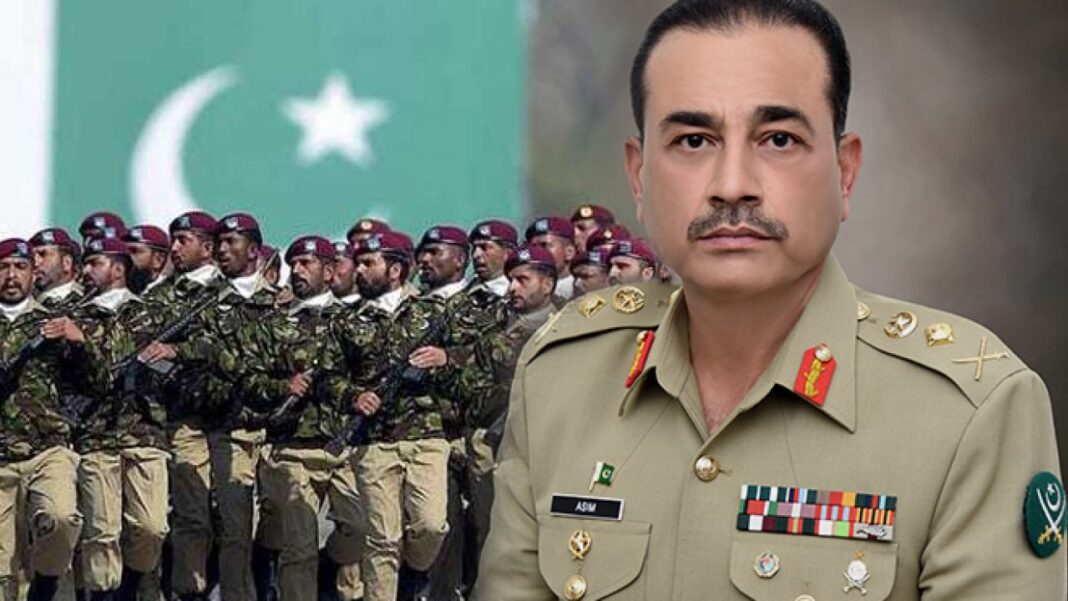May 9 is the day when a mob ransacked the Lahore Corps Commander’s house, an ISI office and several other military installations across the country. It was an unprecedented day in the history of Pakistan. It was the first public coup against the Pakistan Army.
Many view the day as a turning point for Pakistan. But it is not so. The breach of seemingly unbreachable GHQ, Jinnah House, ISI office and other key military and civil installations not only shocked the country but also shamed the military. It was not the enemy which ransacked these installations, nor terrorists but their own people–nothing could be more calumnious for the army.
The army chief, General Asim Munir, had only a few days ago, at the Pakistan Military Academy, Kakul, made it a point to emphasise the importance given by the army to protect the people and build a better relationship with them. Coming soon after, this major, unprecedented public humiliation ripped the Generals never before. One of the top Generals is under investigation for siding with the rioters. Others have fallen in line. The young officers are furious at the army leadership’s capitulation to unarmed rioters. The army chief is furious and his outbursts are now public. For years, May 9 will be marked as a day of shame at army clubs and gatherings.
The world has been witness to the rioting and destruction on May 9. But only few know why the army let it happen. Why weren’t the rioters stopped at Jinnah House? Why did the Corps Commander decide to tamely surrender to the rioters and then leave the house to be vandalised? Why were there no guards to prevent protesters from attacking the GHQ gate? Most important of all, why did the army not make any move to contain and repulse the attacks on its institution?
It was only after several hours that the ISPR came out with a hard hitting statement against the rioting. The IV Corps Commander Lt. Gen. Fayyaz Ghani was replaced as he reportedly told his chief that he would not fire on his own people. Consequently, he ‘allowed’ the protestors to come into the official residence and then appealed for calm. There is a fundamental rift in the Pakistan Army today, precisely because there are those officers who are sympathetic to Imran Khan. This is a rare occurrence that sections of the top echelons of the Pak Army have favoured a politician out of power.
That General Munir immediately undertook a tour of garrisons to connect with officers and reaffirm his command left little doubt that he was under pressure. Previous army chiefs, such as Generals Pervez Musharraf, Ashfaq Kayani, and Qamar Bajwa, had also undertaken similar actions when faced with internal challenges during their tenures. The challenge for the Army is that Imran Khan has chosen the path of direct confrontation with the Chief of Army Staff, General Munir.
What lies ahead for the current Army Chief, Gen. Asim Munir? With his reputation as Army Chief at stake, he will do all he can to restore the image of the Pakistani Army. Thus the clarion calls for the Army Act and every other possible legal tool in the rulebook to be employed to try those who unleashed the violence on 9 May. His frustration also stems from his inability to control his own Corps Commanders, perhaps only a minority, but that by itself tends to rock the boat. Therefore, confrontation with Imran Khan will continue.
At the end of the day, reading the tea leaves in Pakistan is a difficult job. What can be safely predicted is chaos and more chaos. This indicates that for the time being, the Army will drive the events, engineer the elections later this year, consolidate its leadership and ranks but all without taking the driver’s seat. There will be no outright coup but the army would like to put in place a hybrid regime before it steps back. But such a scenario will solely depend on how Munir will manage Imran Khan Niazi in the coming weeks.
thepakmilitarymonitor.com

